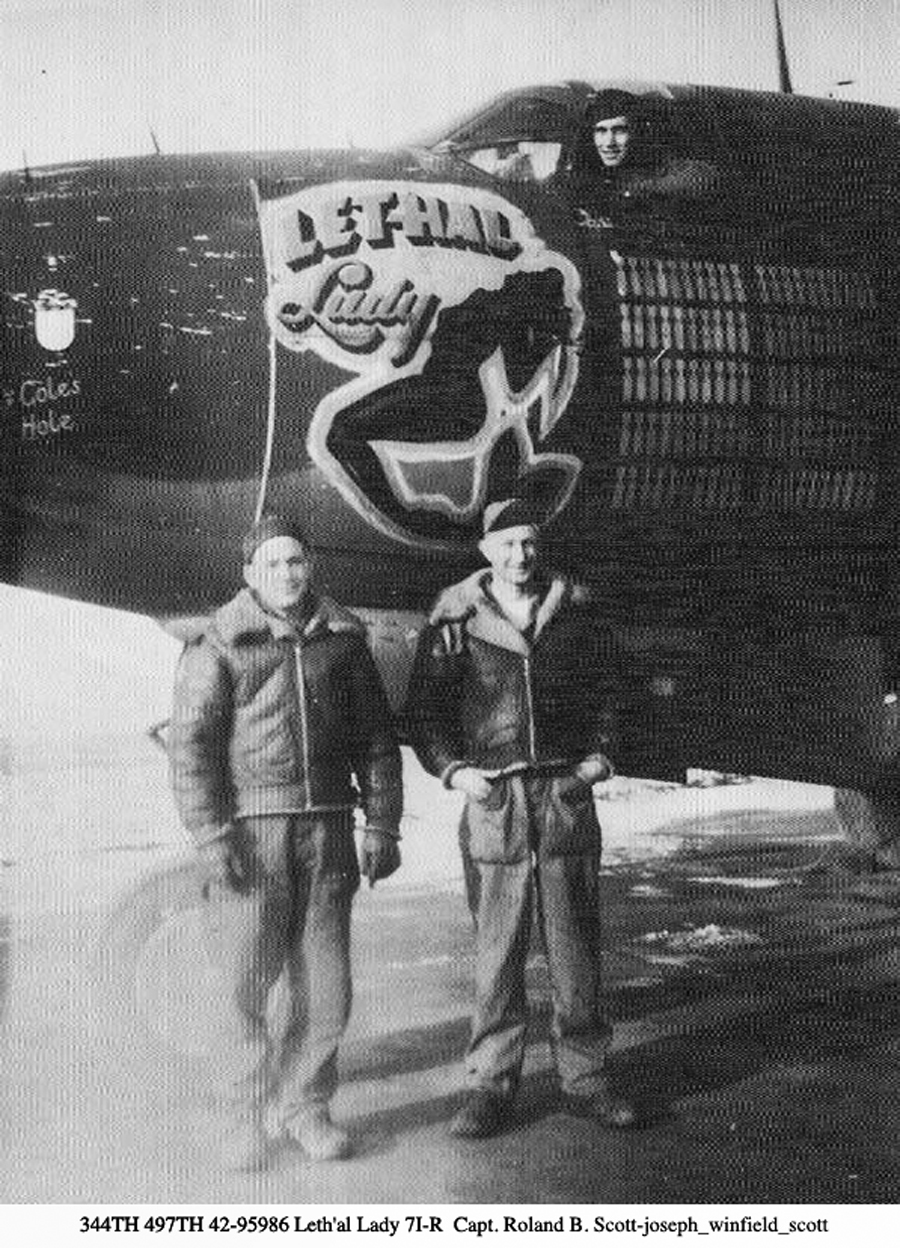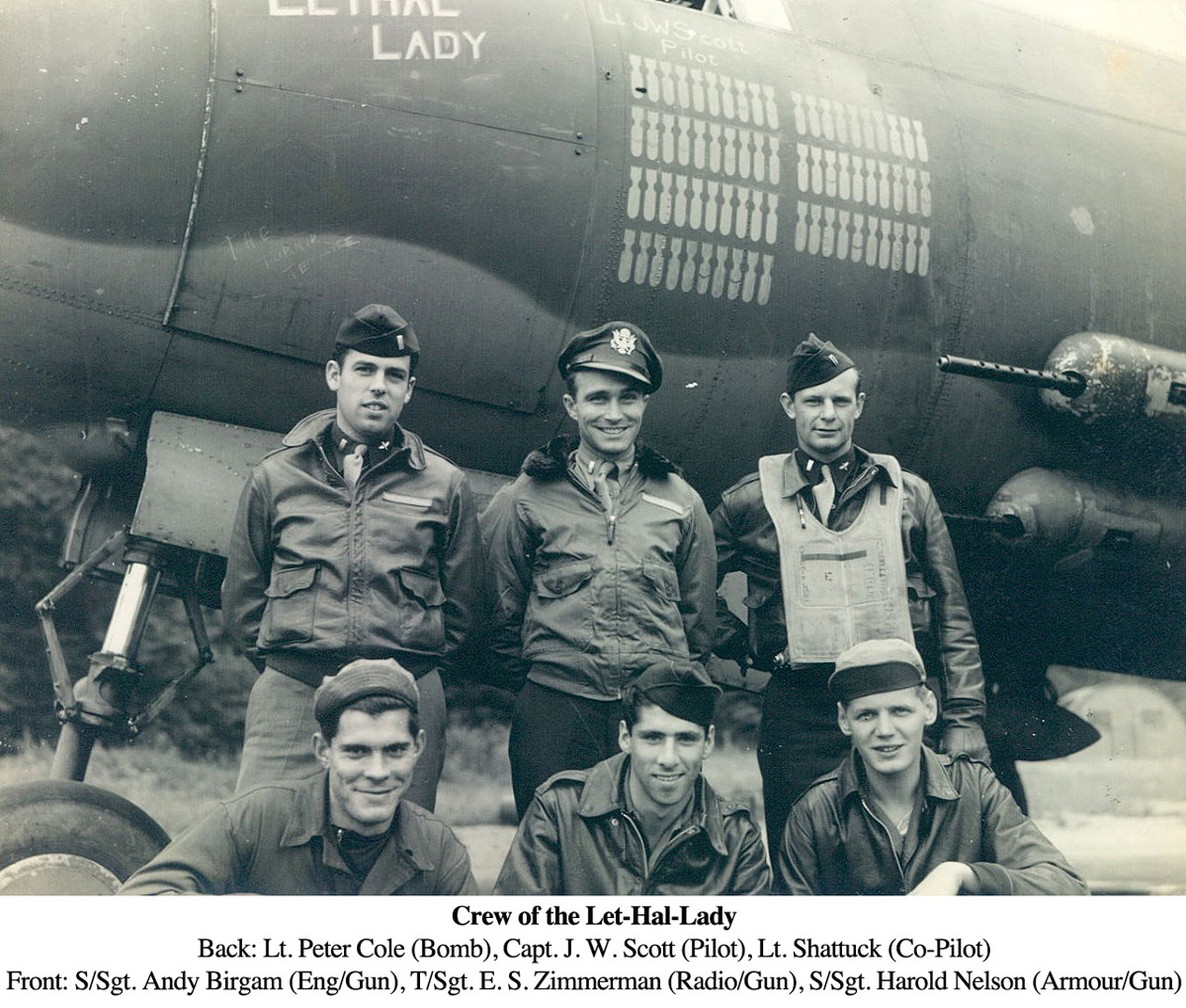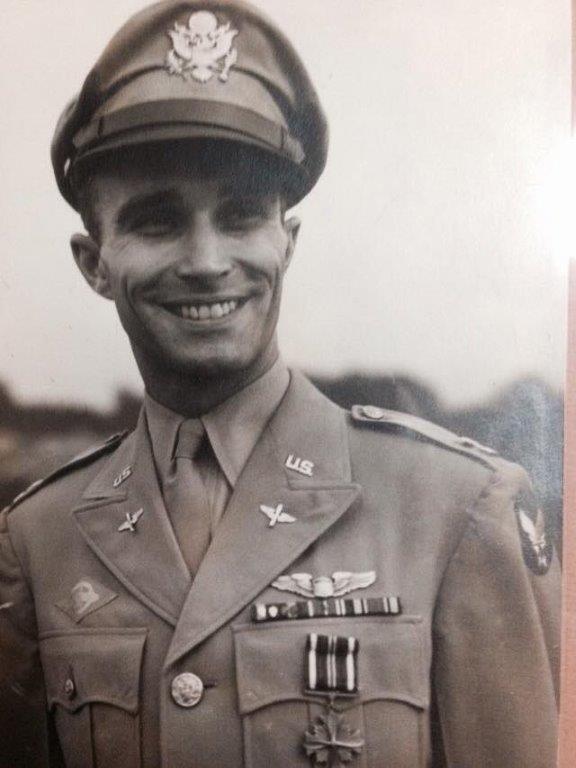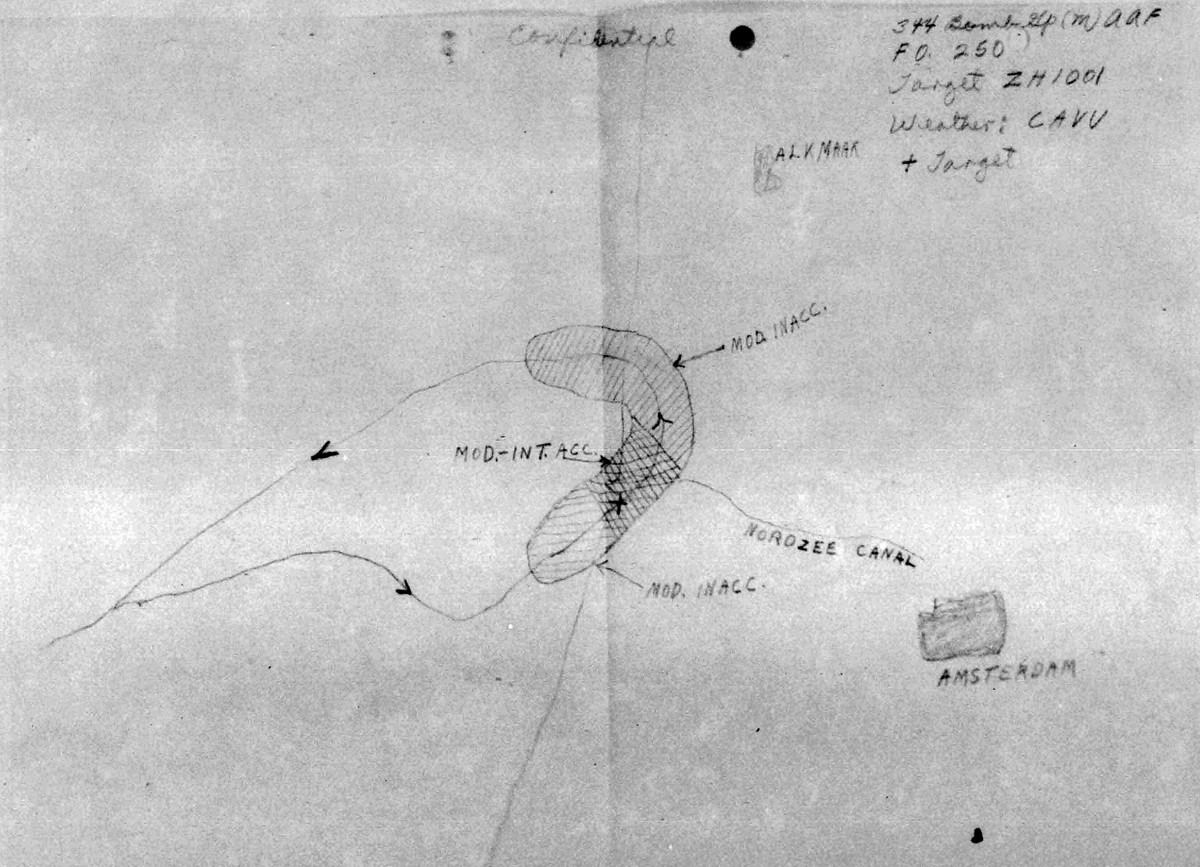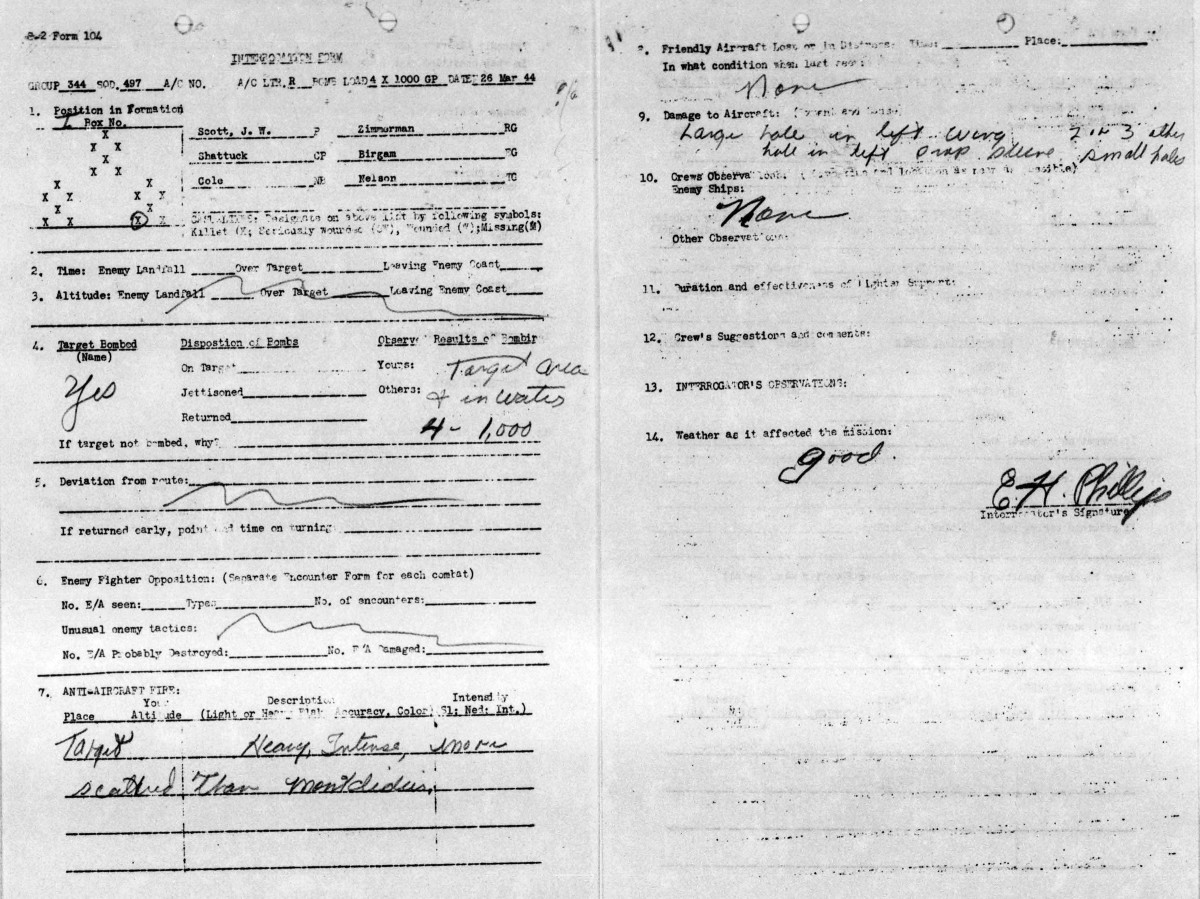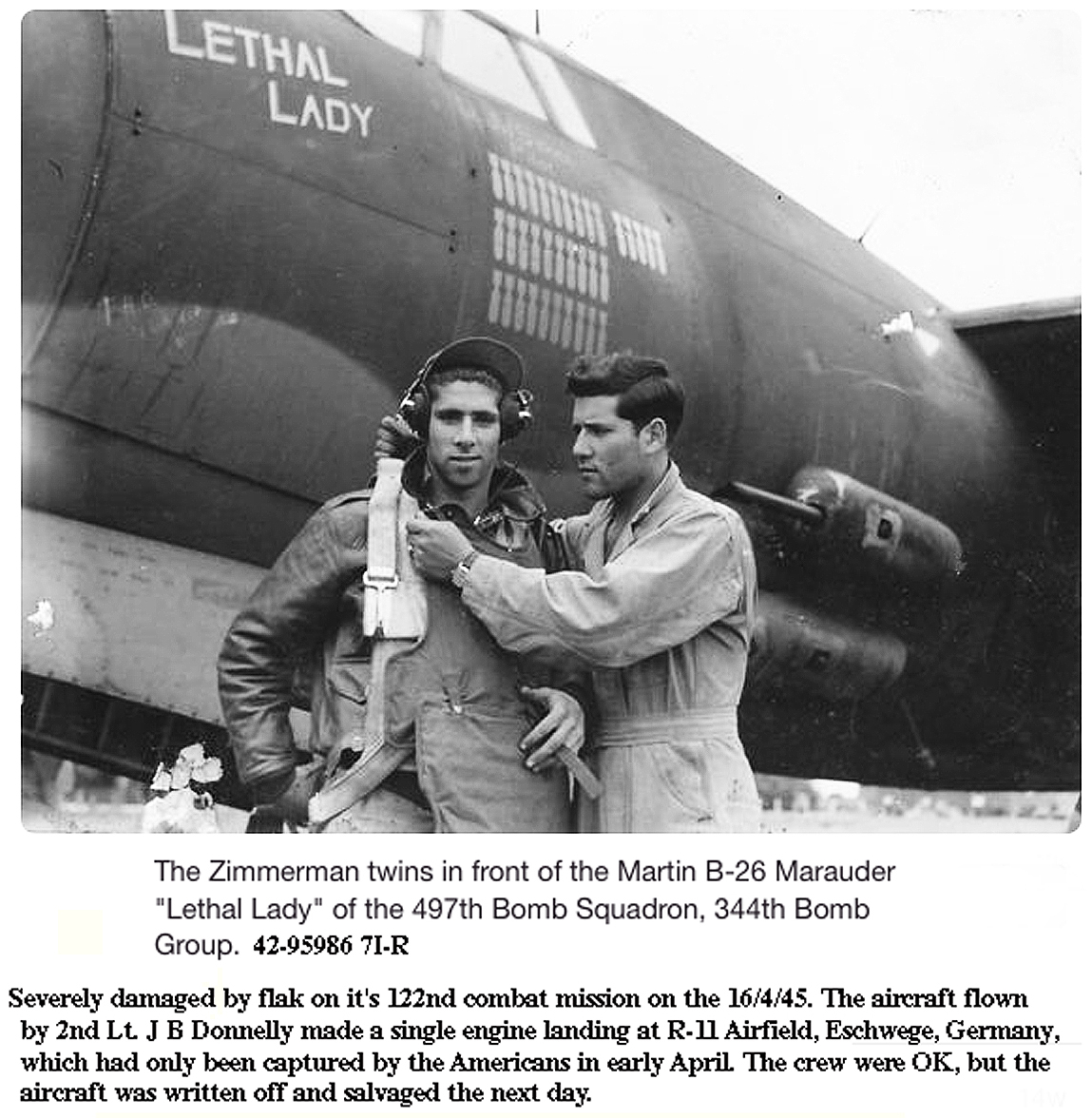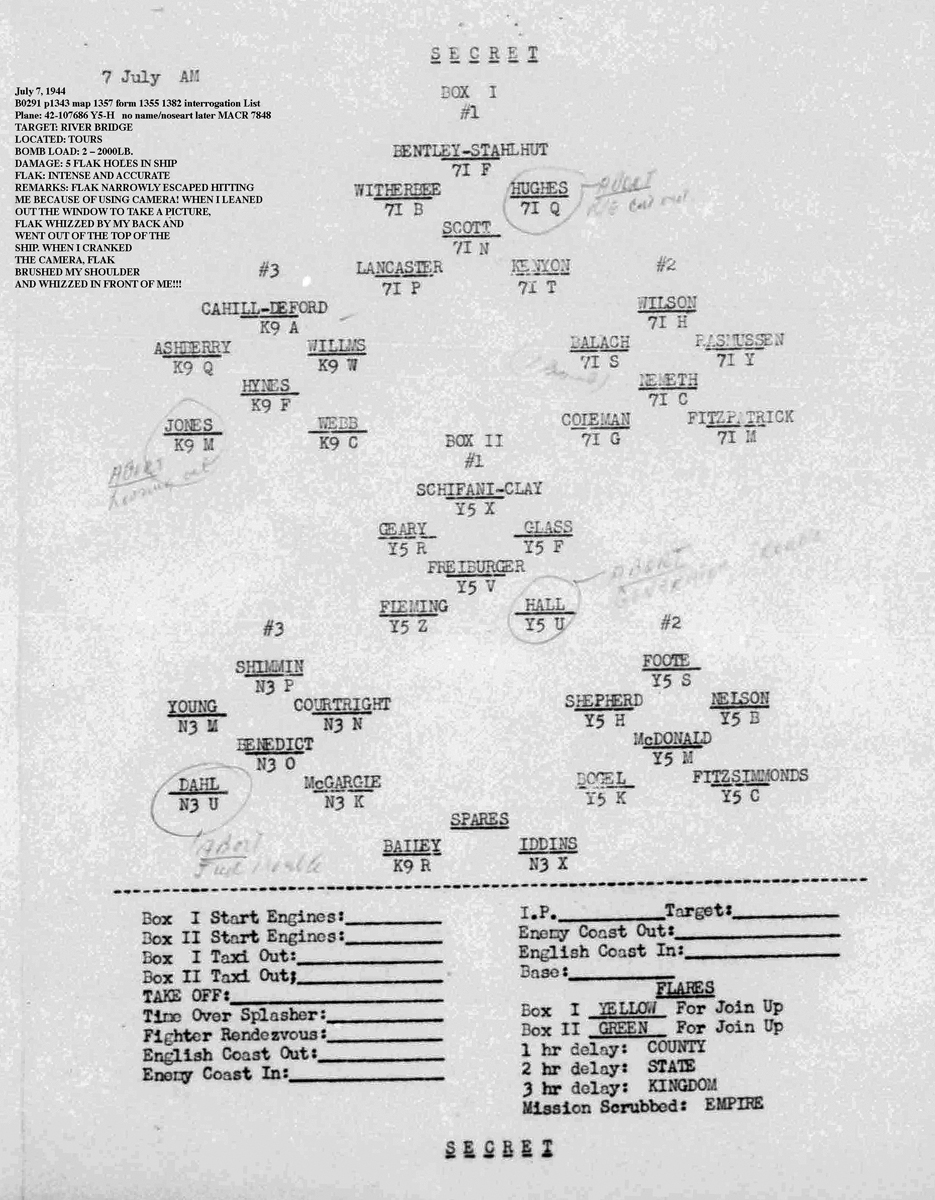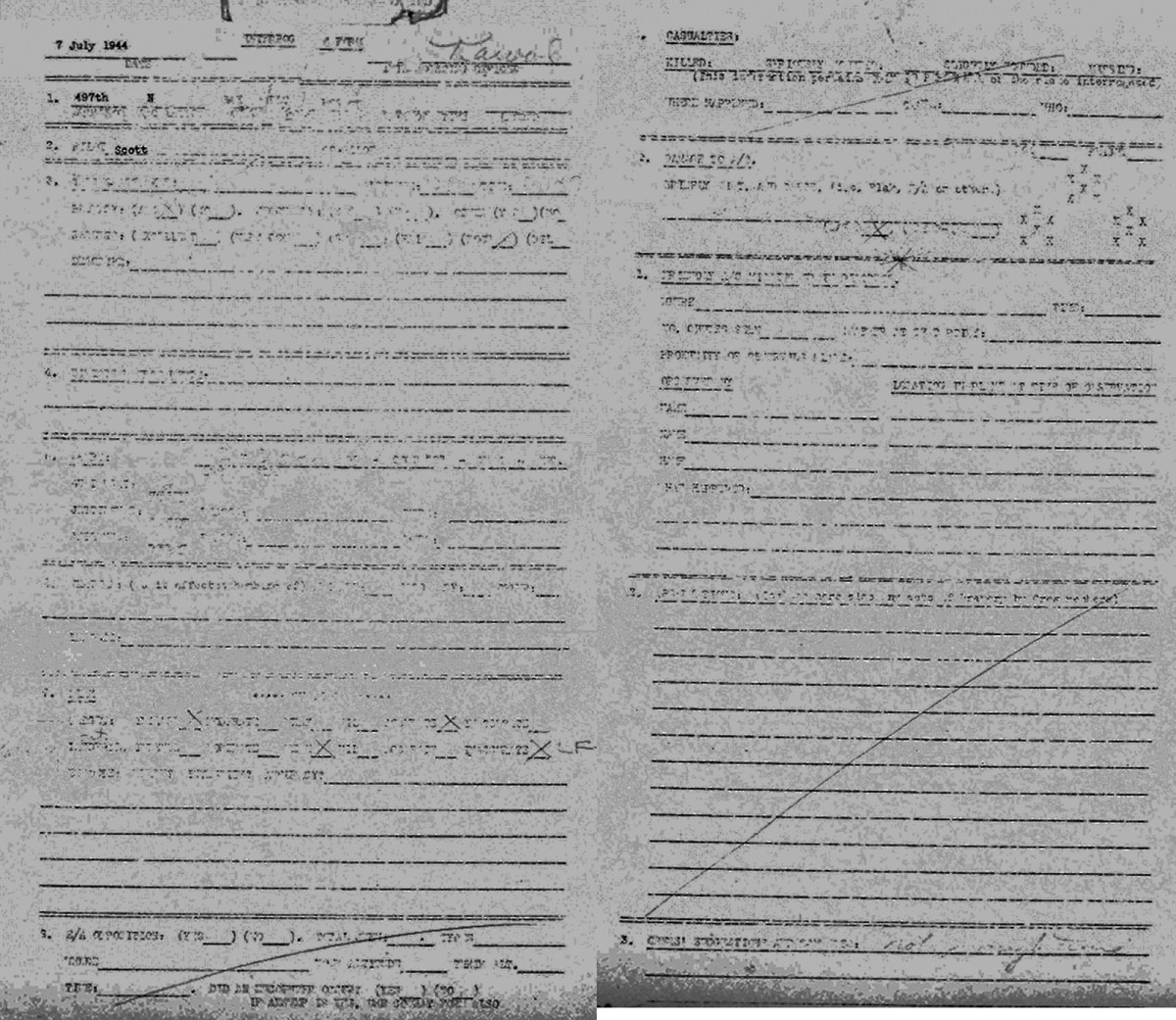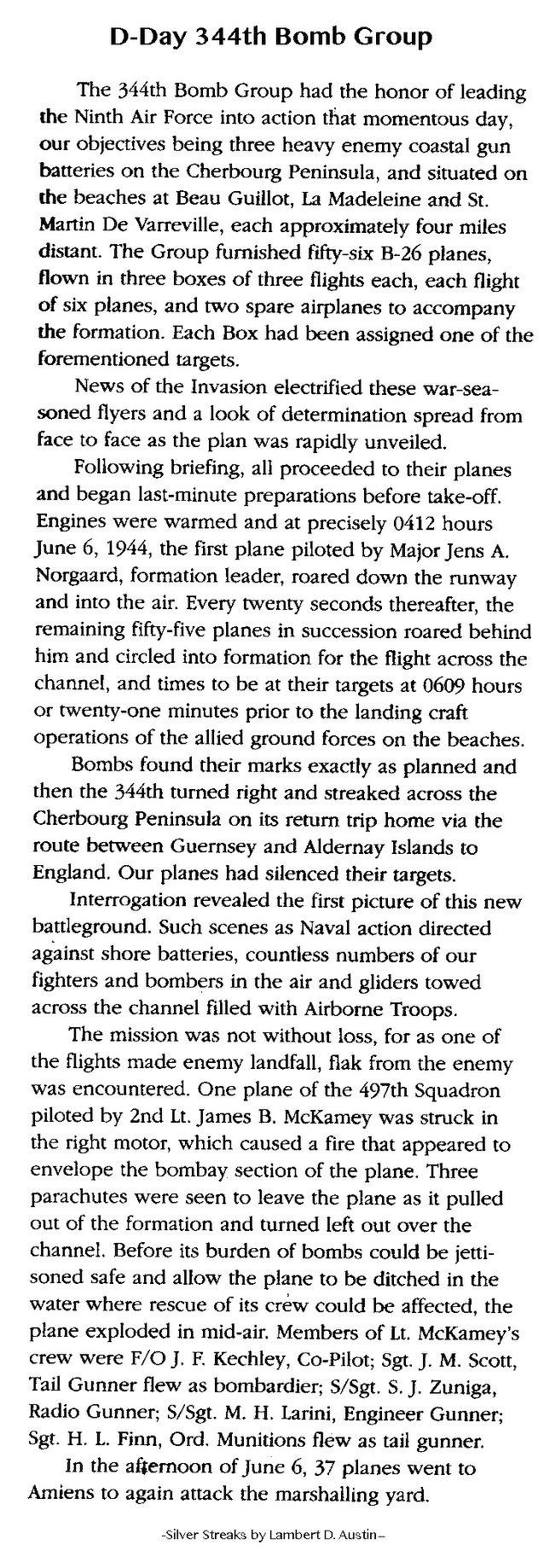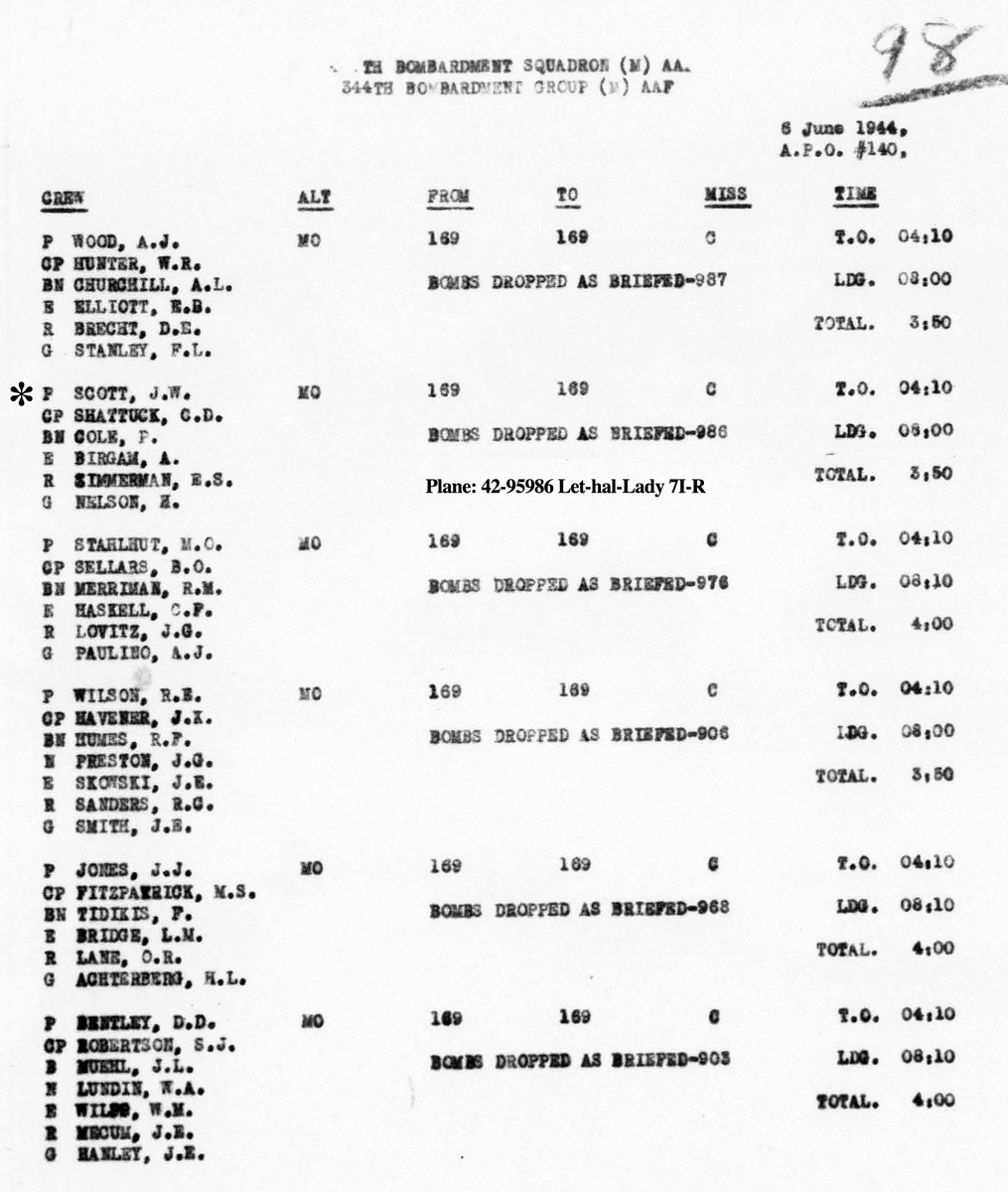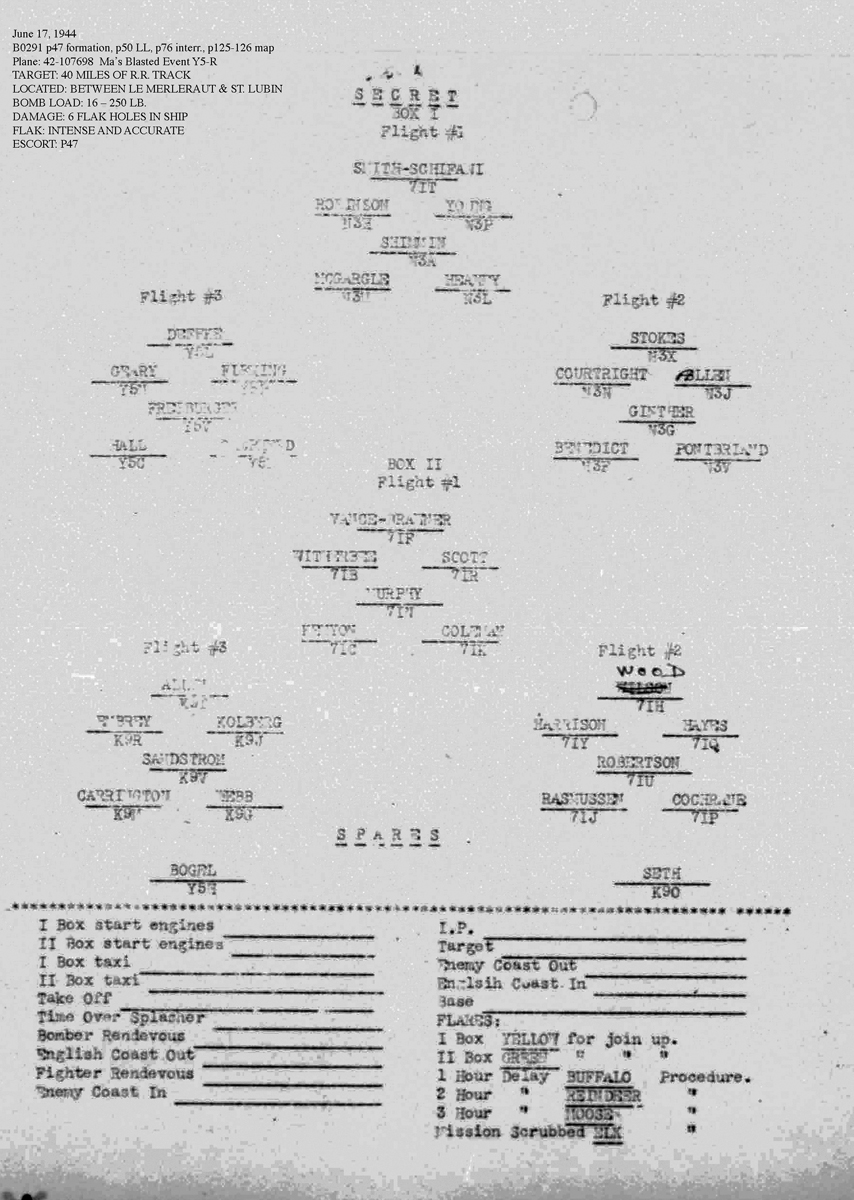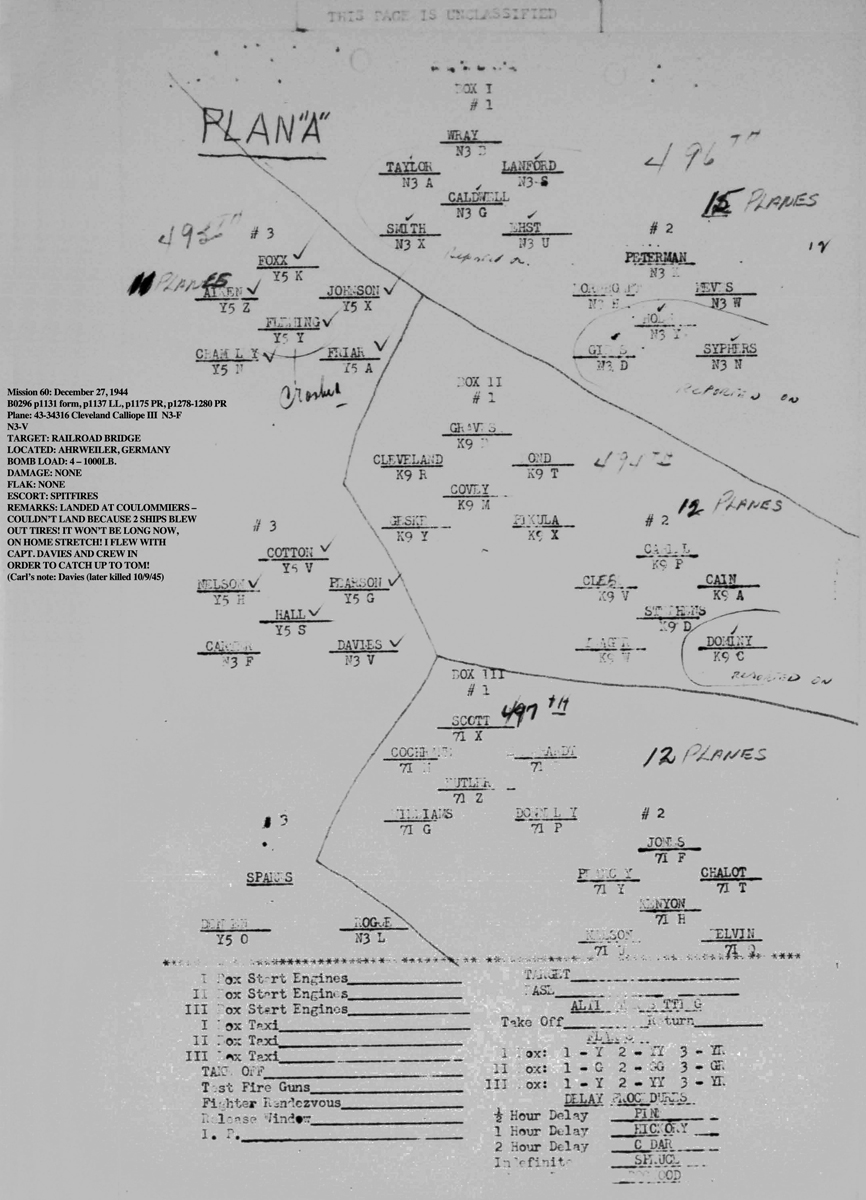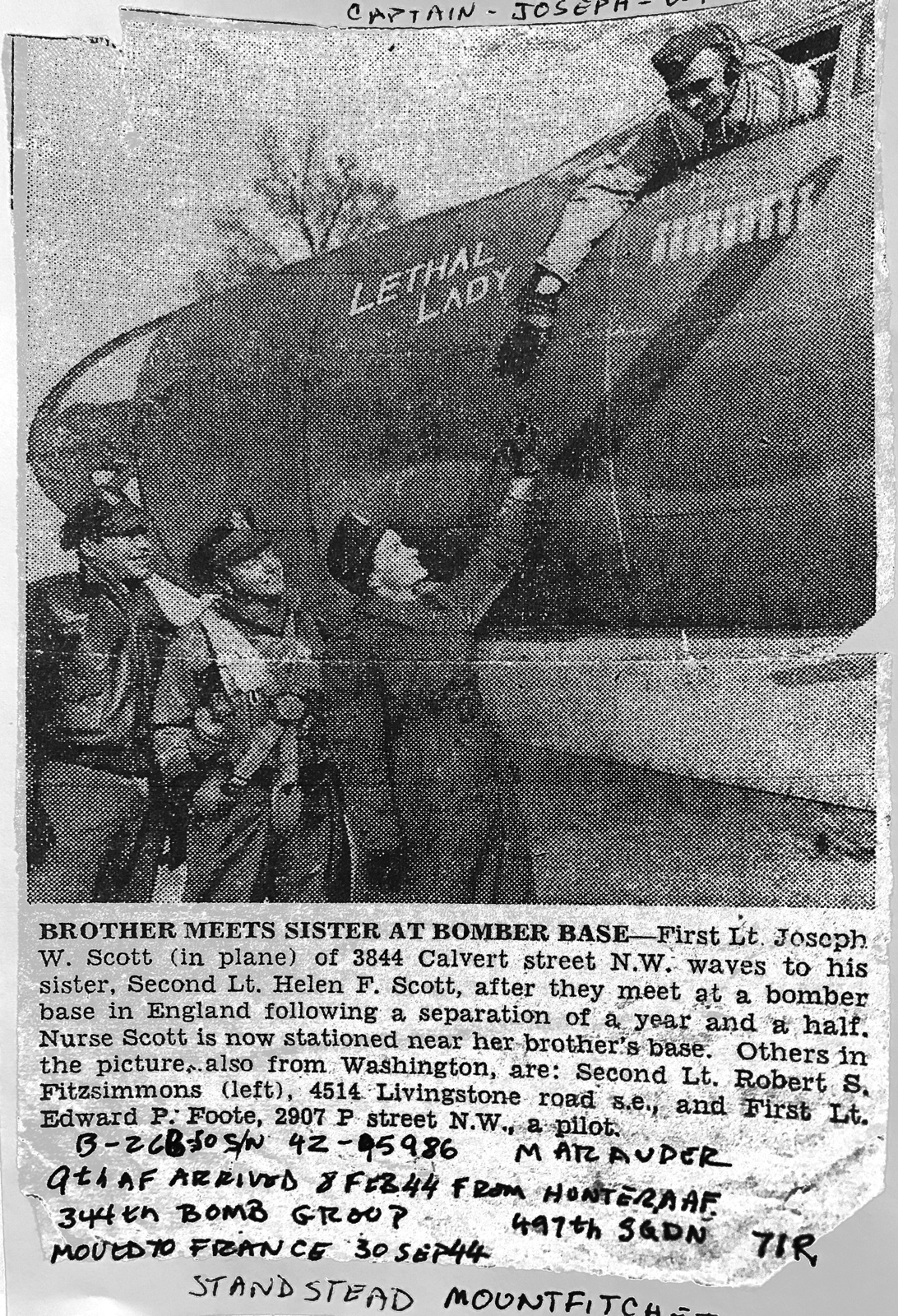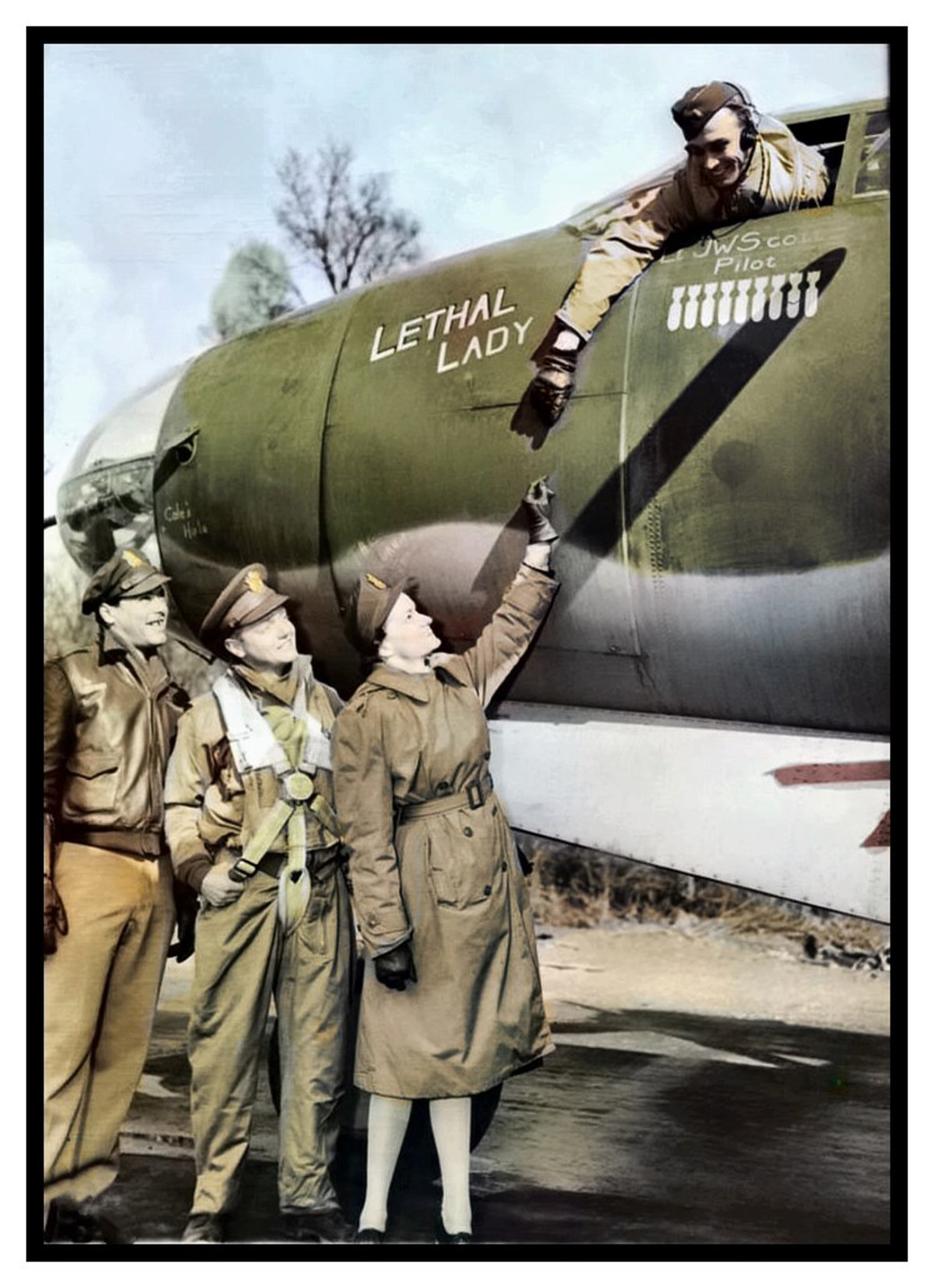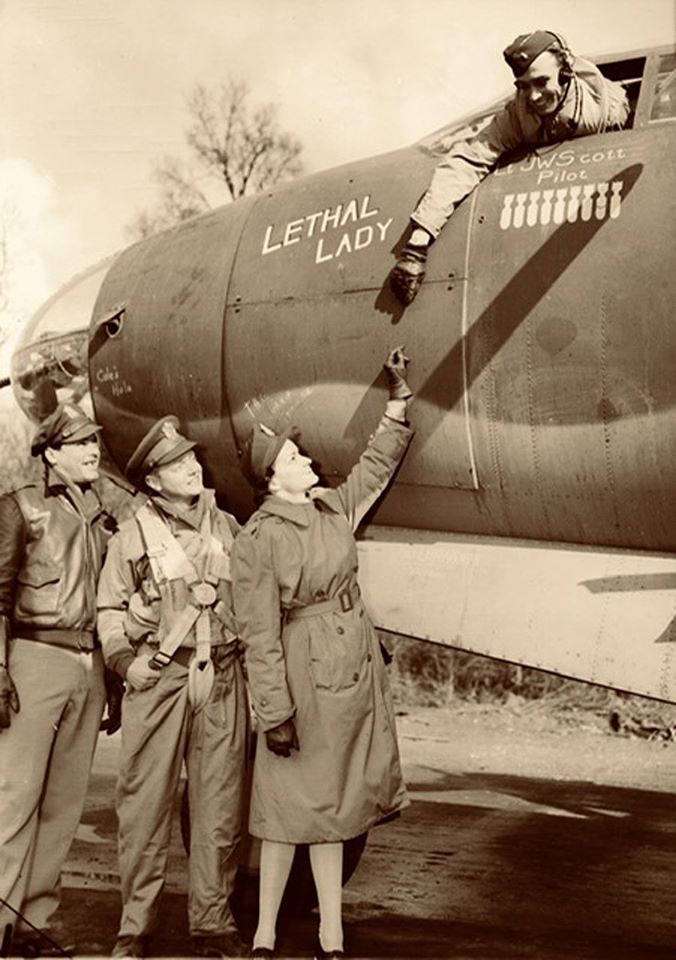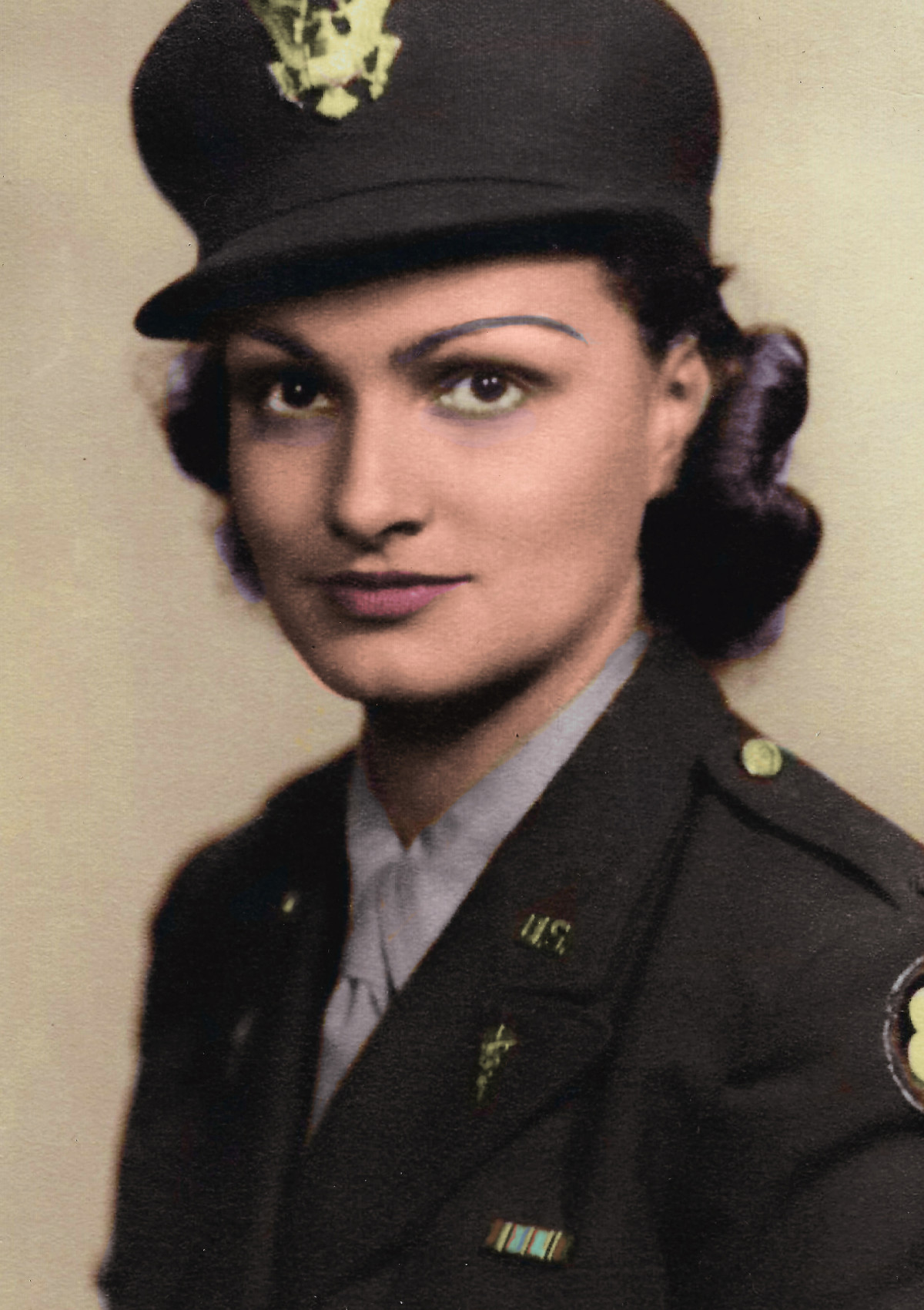Captain Joseph Winfield Scott
Click any image to enlarge.
.
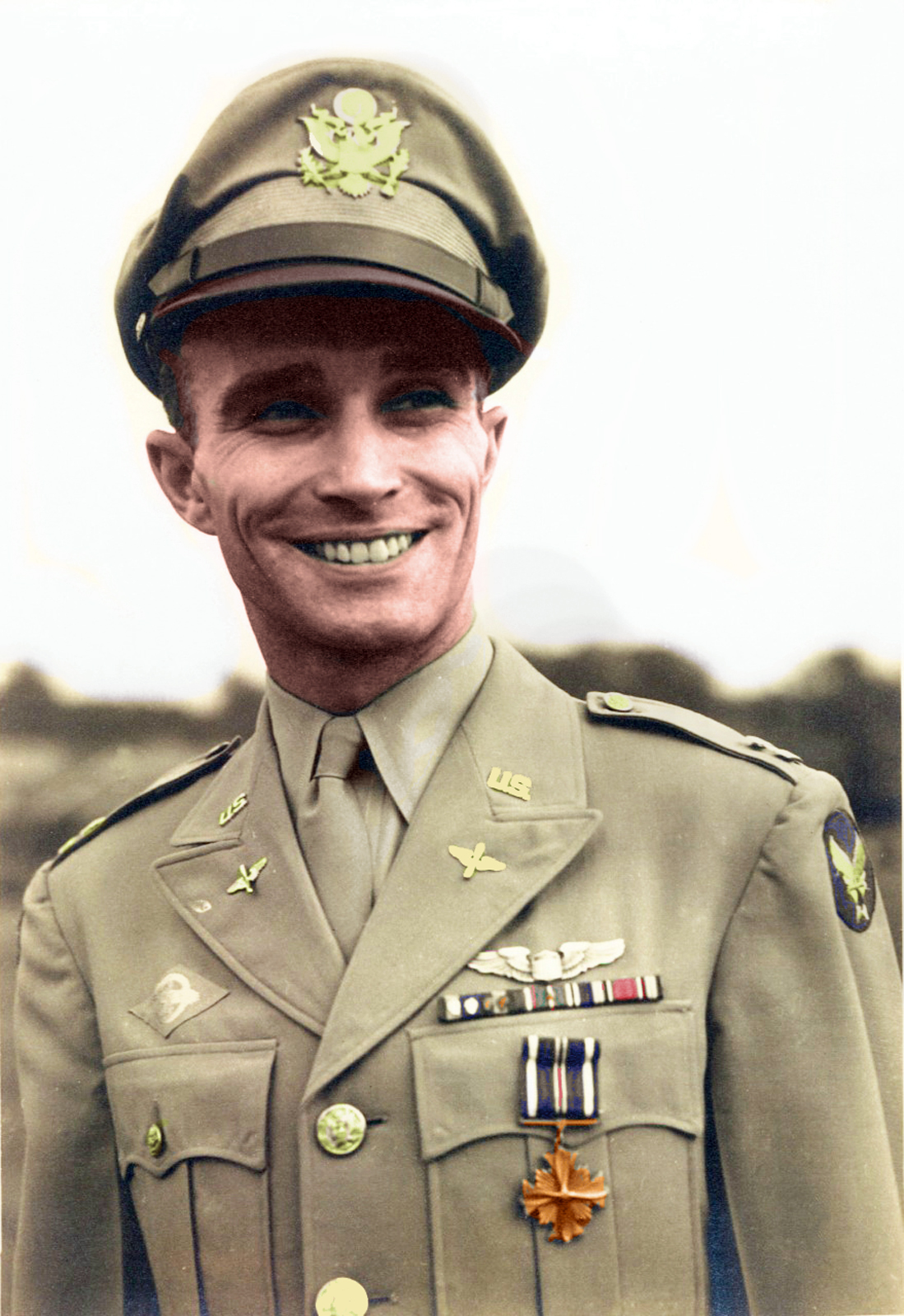
Captain J. W. Scott after receiving the Distinguished Service Cross.
colorized by Carl Carrozza
I was contacted by Gregory Scott. He told me that his dad, Joseph W. Scott is in a picture on this website. You can see below that he is in the cockpit in this picture. Edward Andrew McGarrahan is the taller man next to the plane. He was the crew chief of the lethal lady.
Captain Joseph Winfield Scott flew 65 missions as pilot of the Lethal Lady and other aircraft with the 344th Bomb Group, 497th Bomb Squadron. He flew beginning in the spring of 1944 and ending in January 1945.
.
Distinguished Flying Cross was awarded to Captain Joseph Winfield Scott by the Commanding General. Ninth Air Force. The citation is as follows:
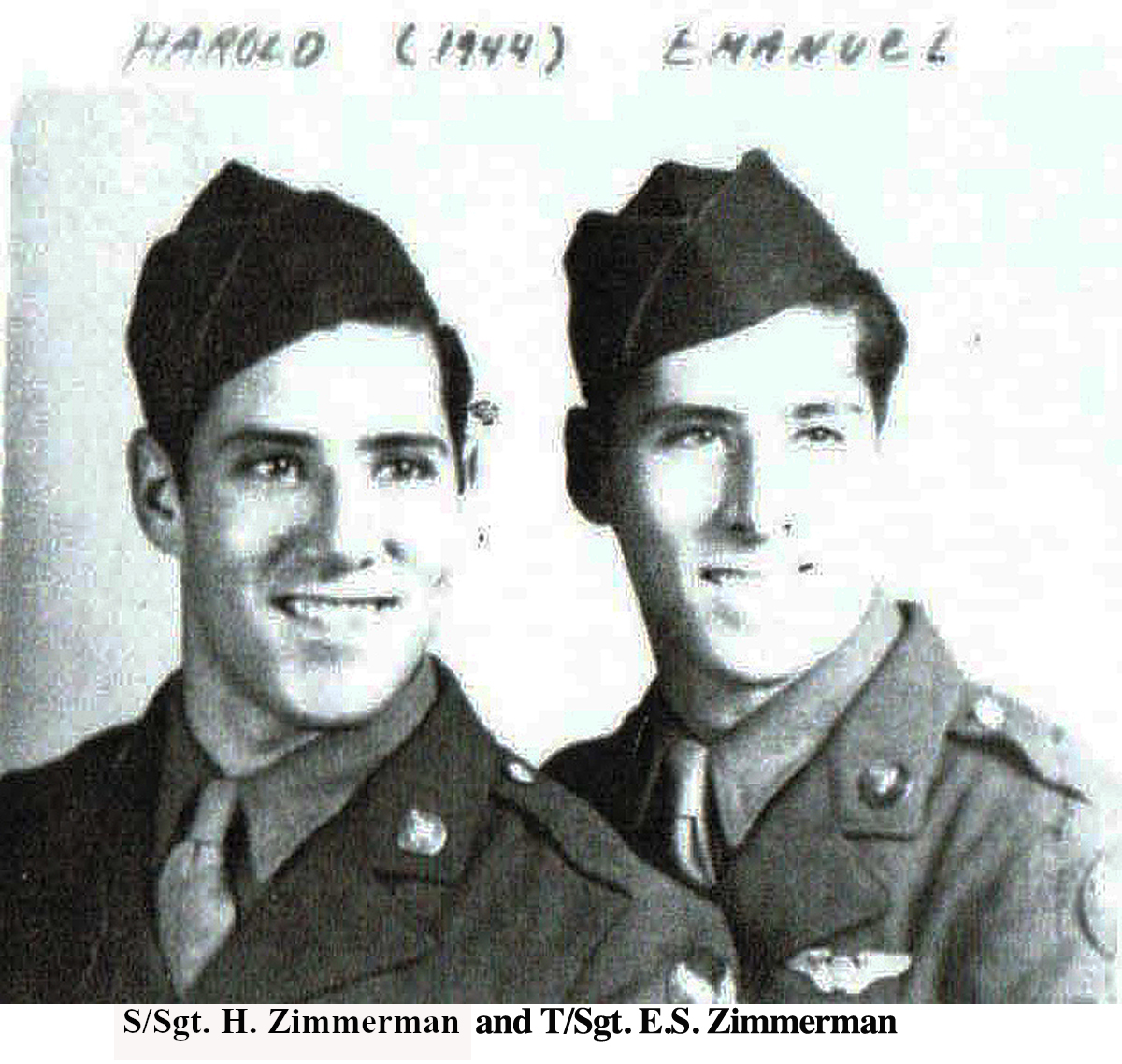
.
“For extraordinary achievement from
March 1944 to January 1945. On 26 March
1944 Capt Scott was assigned as pilot of
a B-26 type aircraft to destroy E-Boat
pens at Ijmuiden. Holland. Despite intense
and accurate antiaircraft fire
which damaged his aircraft Capt SCOTT
nevertheless maintained his position in
formation and bombed his objective with
great effectiveness. Again on 7 July
1944 Capt Scott was flying as deputy
leader of eighteen aircraft dispatched
on a mission in the vicinity of Tours,
France. A formidable barrage of antiaircraft
fire sustained severe battle
damage to his aircraft, rendering his
left engine inoperative but. demonstrating
outstanding airmanship and determination
Capt SCOTT led his formation
in a highly successful bomb run and
destroyed a vital link in the enemy’s
supply and reinforcement system.”
Click to see original citation document.
Below is the original photo of Captain J.W. Scott taken shortly after the ceremony awarding him the Distinguished Flying Cross at Bolling Field.
The following are records regarding the two missions cited for Cpt. Scott’s DFC Medal.
For the mission of March 26, 1944, only a map of the mission and debriefing form could be found.
March 26, 1944 was to be a “banner” day for all of the Marauder Groups. The Ninth Air Force, long smarting over the loss inflicted on the 322 Bomb Group at Ijmuiden, Holland, on a low-level mission in the early stages of the Air Force’s operations in the E.T.O. had planned to bomb the Submarine shelters under construction by the enemy in that city. Eleven Marauder Groups participated, with the 322nd Group in the lead. The 344th Group dispatched fifty-two planes, each laden with 4 x 1000-pound General Purpose bombs. Of this bomb load, 197 bombs were dropped by the 344th BG, some of them striking directly on the roof of the shelters. As the ships flew homeward, huge billows of smoke were seen to rise several thousands of feet in the air as evidence of the destruction wrought in that area and a satisfaction was felt, in a measure, that the early loss to the Air Force had been avenged. Only nine planes showed evidence of slight damage, despite the heavy concentration of anti-aircraft fire the Germans shot up at the formation. No bombers we re lost and there were no casualties to personnel.
Cpt. Scott indicated the following information in the “Interrogation Report” above: His aircraft was 42-95986 Let-hal Lady 7I-R . It flew in the 1-2-6 position, near the front of the formation. The crew consisted of Scott,Pilot; Shattuck, Co-pilot; Cole, Navigator/Bombardier; Zimmerman, Radio/Gunner; Birgam, Engineer/Gunner; Nelson, Tail Gunner. The plane carried 4- 1000lb bombs that landed in the target area and in the water. The flak at the target was heavy and intense. He did not witness any group aircraft being destroyed. The plane suffered a large flak hole in the left wing and 2 or 3 smaller holes.
The second mission cited in Captain Scott’s DFC award took place on July 7, 1944. Capt Scott flew as deputy leader of eighteen 344th BG aircraft dispatched on a mission to destroy a railway bridge in the near Tours, France. Heavy antiaircraft fire caused severe damage to his aircraft, knocking out the left engine. Demonstrating great airmanship and determination, Capt Scott led his formation in a successful bomb run and destroyed this important bridge.
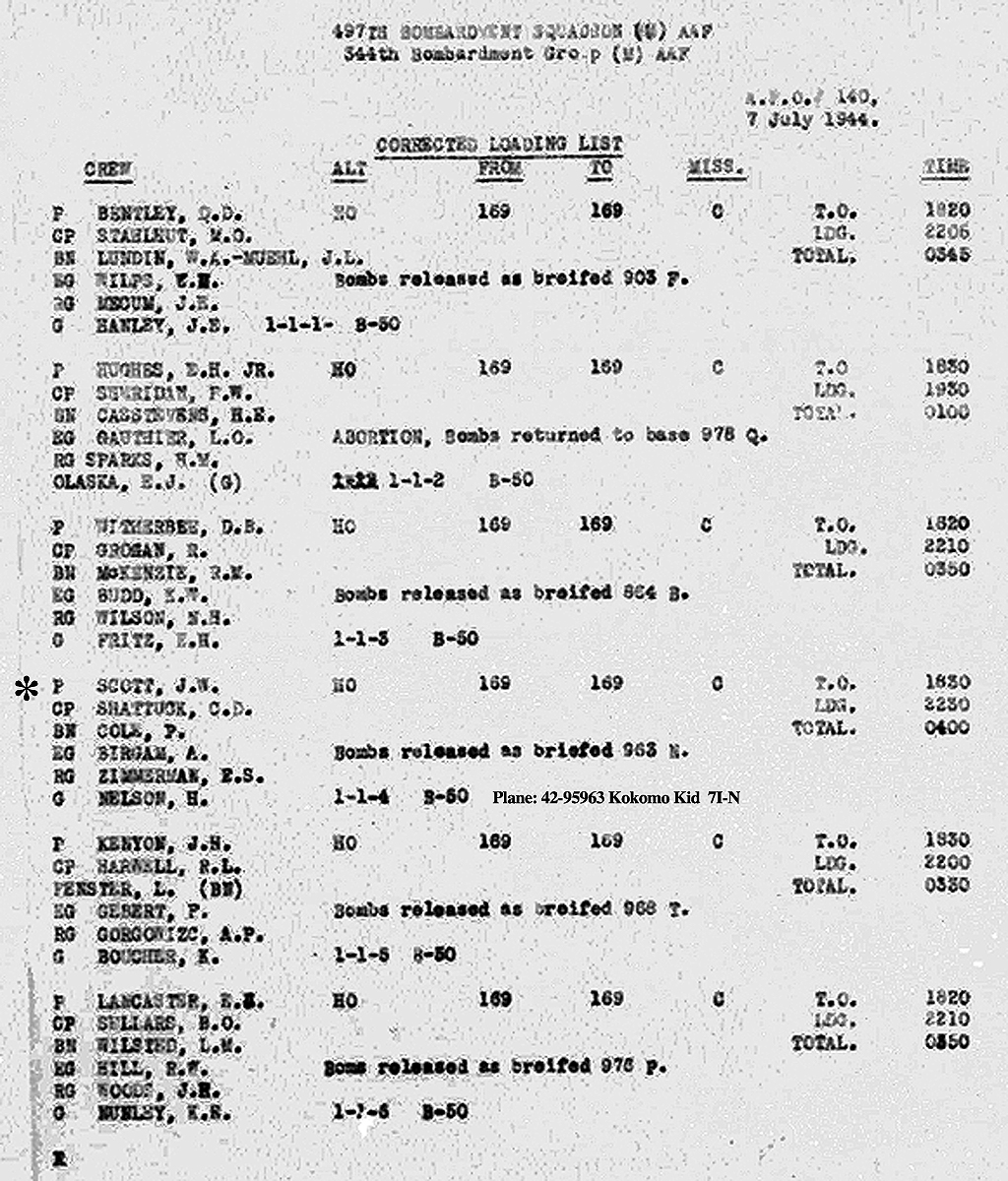
The crew consisted of Scott,Pilot; Shattuck, Co-pilot; Cole, Navigator/Bombardier; Zimmerman, Radio/Gunner; Birgam, Engineer/Gunner; Nelson, Tail Gunner. The plane was 42-95963 Kokomo Kid 7I-N
.
Captain Joseph Winfield Scott took part in the D-Day Invasion of Normandy. The 344th Bomb Group was the first to bomb the beaches to create foxholes and destroy gun emplacements. The bomb run was successful and as a result the casualties at Utah Beach were relatively light: 197, including 60 missing. This compares to the over 2000 casualties on Omaha Beach. (The B-17 Heavy Bombers overshot the beach.)
The archive records below tell us about Capt. Scott’s experience.
Scott flew 42-95986 Let-Hal Lady 7I-R . He was near the front of the second box in position 3-1-2.
.The crew consisted of Scott,Pilot; Shattuck, Co-pilot; Cole, Navigator/Bombardier; Zimmerman, Radio/Gunner; Birgam, Engineer/Gunner; Nelson, Tail Gunner. They took of at 4:10 am and landed at 8;10 am. The bombs were dropped as briefed.
Shortly after D-Day Lt. Scott wrote to his sister, Winifred. He mentions the invasion, while the balance of the letter shows you a nice slice of life of the times.
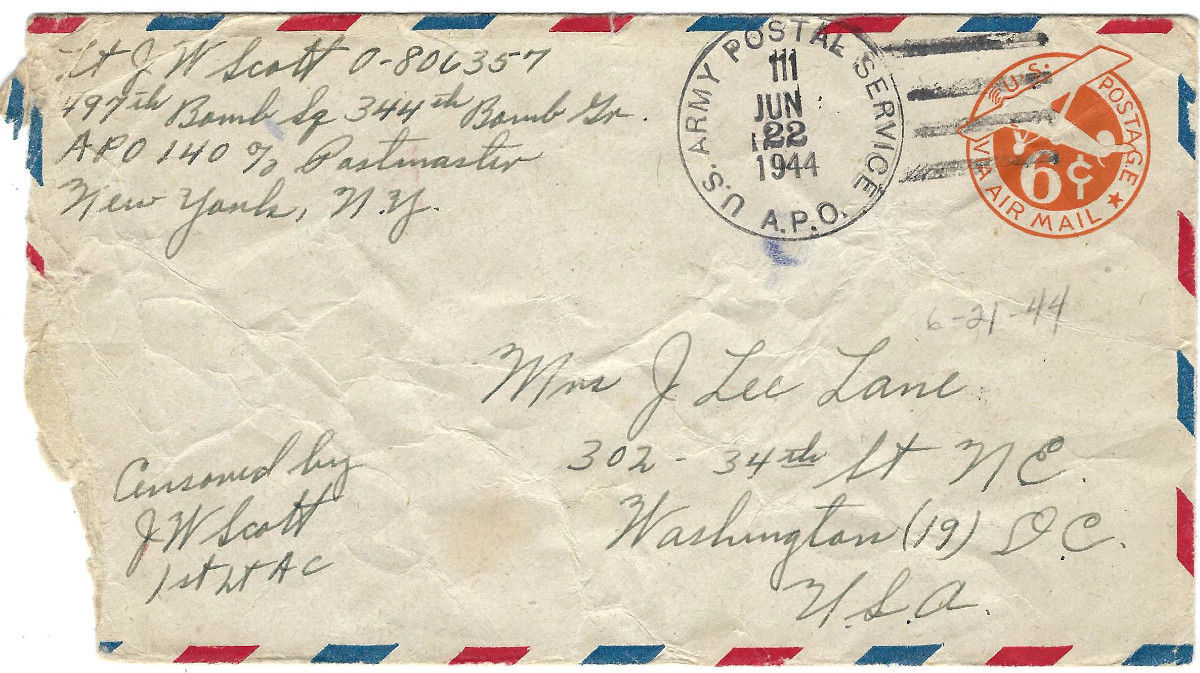
.Records show a mission on June 17, 1944
.On that day Scott piloted 2-95986 Let-Hal Lady 7I-R near the front of Box II in position 2-1-2.
The 344th Bomb Group supported Allied forces during the Battle of the Bulge, Dec 1944-Jan 1945, and continued to strike such targets as supply points, communications centers, bridges, marshaling yards, roads, and oil storage tanks until Apr 1945.
Captain Scott flew one such mission on Dec 27, 1944:
TARGET: RAILROAD BRIDGE
LOCATED: AHRWEILER, GERMANY
BOMB LOAD: 4 – 1000LB.
DAMAGE: NONE
FLAK: NONE
ESCORT: SPITFIRES
Captain Scott lead Box III in position 3-1-1.
- 494 Squadron–The mission for the 27th of December was an attack against the Ahrweiler Railroad Bridge. Our squadron furnished twelve aircraft. This mission was yet another step in the plan to isolate the enemy forces participating in the Eiffel counter-offensive. Heavy smoke in the target area prevented the bombardiers from picking up the exact location, however, with the aid of check points, some good concentrations were achieved and great damage was wrought to this transportation facility.
Military service in WWII was a family affair for the Scott’s. Here is an interesting reunion in the ETO that made the newspapers.
.The story is that a couple of airmen, 2nd Lt. Robert S. Fitzsimmons and 1st Lt. Edward P. Foote overheard a pretty girl asking for information about her brother at a local post office. She got nowhere with the postman. But, when she came outside she was checked out by a the helpful airmen who then assisted in making the reunion happen. The woman was 2nd Lt. Helen Frances Scott, Army Nurse Corps and her brother was Captain Joseph Winfield Scott.
The original image
A note from Helen’s son, Stephan Gormley:
“My mother stayed with the 30th Gen Hosp during its travels through France and Belgium until the war was over. It turns out that while there, she carried on an secret relationship with an enlisted Tech Sergeant, by the name of Mike Gormley, who was also with the 30th. They got engaged and married after they got home. That’s where I come into the picture and am able to tell you all this.”
Thanks to Stephan Gormley for supplying many of the materials you see above.
I followed Uncle Joe’s example and also became an Army Aviator. I graduated in 1971, flew helicopters in RVN and then in the NJ and Texas ARNGs.
.
Finally, some general information about the Let-Hal Lady (7I-R 42-95986)is as follows;
Built at the Glenn L Martin factory at Baltimore, Maryland as a B-26B-50-MA. Accepted by the Army Air Force on 18/12/43. Next listed at Raleigh-Durham Army Air Field, North Carolina (ATC) from 23/12/43. Then went to the 3rd AF staging area at Hunter Field, Savannah, Georgia (from 24/12/43). Assigned to the 344th BG at Hunter Field. Flown overseas to the UK via the Southern Ferry Route (Listed as Caribbean Wing), departing the USA on 22/1/44. The aircraft record card then lists, SOXO A (Europe – 8th AF) on 22/1/44, and SOXO R (Europe – 8th AF) on 19/2/44. Original group aircraft. Severely damage by flak on it’s 122nd combat mission on the 16/4/45. The aircraft flown by 2nd Lt. J B Donnelly made a single engine landing at R-11 Airfield, Eschwege, Germany, which had only been captured by the Americans in early April. The crew were OK, but the aircraft was written off and salvaged the next day. The final entry on the aircraft record card lists, SOXO CON SAL NBD on 17/4/45.
.
.
.
